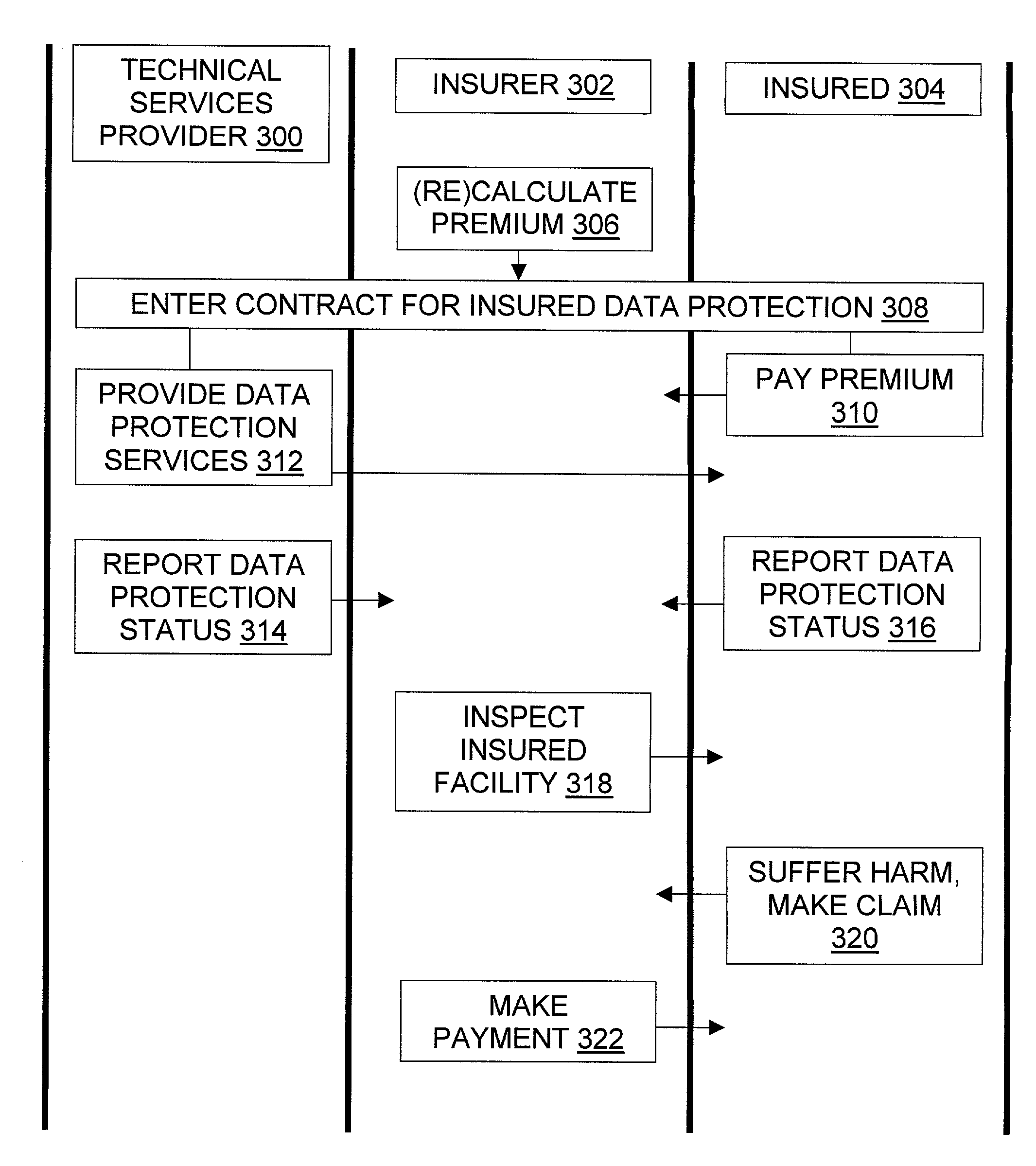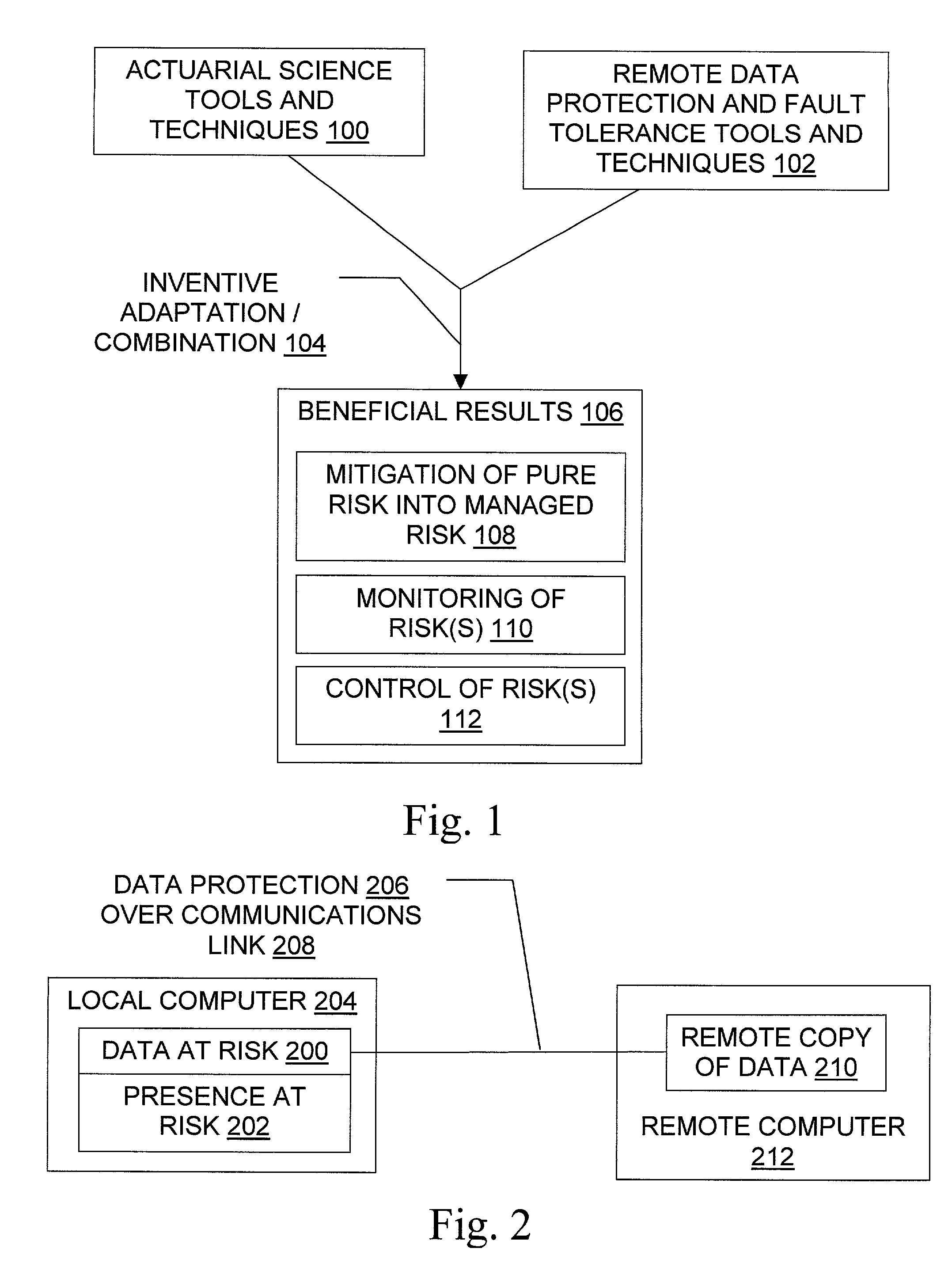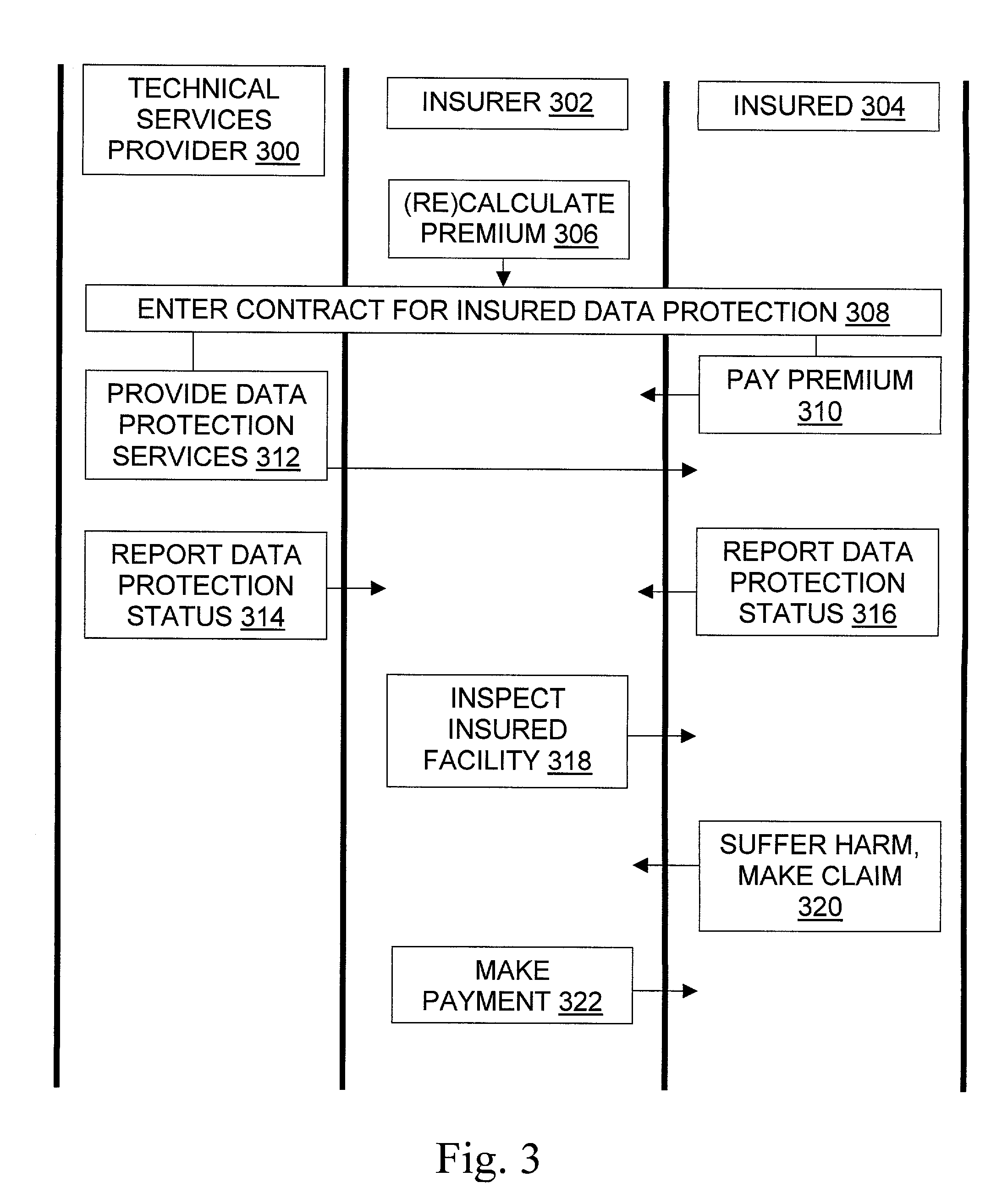Data/presence insurance tools and techniques
a technology for data/presence insurance and tools, applied in the field of risk management and the protection of computer data and services, can solve the problems of loss of physical tangible assets, insufficient structure of traditional insurance methods, and inability to address loss of digital services
- Summary
- Abstract
- Description
- Claims
- Application Information
AI Technical Summary
Benefits of technology
Problems solved by technology
Method used
Image
Examples
example 1
[0087]A business 304 conducting electronic commerce receives an average of one order per minute, with ninety percent of orders in the range from $10 to $100 and orders over $200 extremely rare. Orders are mirrored 206 to a local backup server within at most a few seconds of being received. An incremental tape 210 of the local backup server's new content is created 206 each night and stored 206 at a location 212 twenty miles from the local backup server.
[0088]An insurance underwriter 302 calculates 306 the average transaction value 412 as $50, the average transaction rate 412 as one per minute, and the exposure period 406 for data loss at 24 hours; the period between updates to the tape archive is used by this underwriter, rather than the update to the local backup server, because the local backup server and the main server 204 are not far enough apart 412 to provide sufficient independent recovery capabilities. The underwriter 302 also notes 306 that on average only half the period ...
example 2
[0090]The business conducts electronic commerce as in Example 1, but instead of using a daily tape backup the business uses remote data mirroring technology (see, e.g., U.S. patent application Ser. No. 09 / 438,184 filed Nov. 11, 1999 and / or U.S. Pat. No. 5,537,533) to backup the data within five minutes at a remote data 210 storage facility 212 located two hundred miles from the main server.
[0091]The insurance underwriter calculates 306 the average transaction value as $50, the average transaction rate as one per minute, and the exposure period for data loss at five minutes. The underwriter also notes that on average only half the period will have passed before a data loss event 320. Thus the exposure amount is $50 per transaction times one transaction per minute times 5 minutes in the exposure period times ½, that is, $125. The underwriter calculates the risk of a loss occurring in the exposure period as one in a thousand. Factoring that in, the indicated rate R is $0.125, namely, t...
example 3
[0092]Variations on the definition of “data loss”320 are possible. For instance, one insurance policy 308 may cover only events in which no current copy of the data exists, while another policy 308 may cover events in which a partial but possibly or certainly corrupted copy of the data is available 412. Depending on the business 304, the nature of the data 200, and other factors, a partial copy may or may not be better than no copy. For instance, a partial copy of a graphical image or an audio file may be useful, while a reliable copy of yesterday's transactional records may be preferable to a more recent but possibly corrupted copy of that data.
PUM
 Login to View More
Login to View More Abstract
Description
Claims
Application Information
 Login to View More
Login to View More - R&D
- Intellectual Property
- Life Sciences
- Materials
- Tech Scout
- Unparalleled Data Quality
- Higher Quality Content
- 60% Fewer Hallucinations
Browse by: Latest US Patents, China's latest patents, Technical Efficacy Thesaurus, Application Domain, Technology Topic, Popular Technical Reports.
© 2025 PatSnap. All rights reserved.Legal|Privacy policy|Modern Slavery Act Transparency Statement|Sitemap|About US| Contact US: help@patsnap.com



